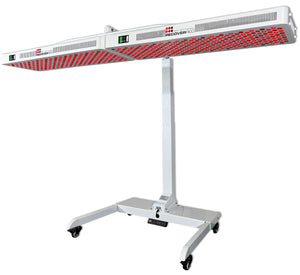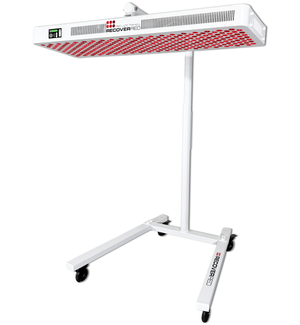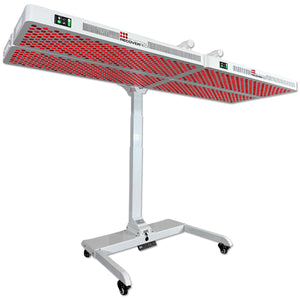
Red light therapy (RLT) has gained significant popularity in recent years for its potential benefits in promoting skin health, reducing pain, and improving overall well-being.
Two primary sources of light used in RLT are LEDs (Light Emitting Diodes) and lasers. Understanding the differences between these two sources is crucial in determining which one is superior for achieving the desired therapeutic effects.
The Power Struggle: LEDs vs. Lasers
In the early days of RLT, lasers were the go-to choice when LEDs were considered too weak for therapeutic applications. Lasers, being coherent light sources, emit highly concentrated and focused light in a single spot. However, this pinpointed intensity required pulsing to prevent the risk of burning or damaging the skin. This pulsing allowed for controlled exposure, but it had its limitations, particularly in terms of even light distribution.
On the other hand, LEDs produce non-coherent light, which is naturally diffused and less focused. The light emitted from LEDs is inherently even but may lack the intensity and focus needed for certain therapeutic purposes. To address this issue, a lens can be used to focus the LED light and avoid excessive dispersion.
The Lens Solution: Balancing the Light Footprint
Lasers require a lens to even out the light footprint, spreading the intense laser light to cover a larger area for therapy. This approach aims to ensure uniform treatment and reduce the risk of hot spots, which could lead to skin damage if left uncontrolled.
In contrast, LEDs require a lens to focus their inherently diffused light. By concentrating the LED light, a lens can transform it into a more focused and potent beam that is better suited for RLT applications. This focus enables LEDs to target specific areas with precision, making them an ideal choice for therapy.
Advancements in LED Technology
As technology has advanced, so has the power and capabilities of LEDs. Modern LEDs, such as the high-powered 5-watt LEDs used by brands like Recove Red, provide a balanced and even light distribution while offering the necessary intensity for effective RLT. These LEDs eliminate the need for pulsing to prevent skin damage, making the therapy safer and more efficient.
Why LEDs are the Superior Choice for RLT
Several factors contribute to LEDs being the superior choice for RLT:
- Even Light Distribution: LEDs inherently provide uniform light distribution, eliminating the risk of hot spots or uneven treatment areas.
- Safety: With high-powered LEDs, the need for pulsing is eliminated, reducing the risk of skin damage and discomfort during therapy.
- Versatility: LEDs can be easily customized to emit specific wavelengths of light, allowing for targeted treatment of various skin conditions and ailments.
- Cost-Effectiveness: LEDs are generally more cost-effective than lasers, making RLT accessible to a broader range of individuals.
- Reduced Energy Consumption: LEDs are energy-efficient and produce minimal heat, ensuring a comfortable and efficient therapy session.
Conclusion
While lasers played a significant role in the early development of red light therapy, modern technology has made LEDs the superior choice for RLT applications. With their even light distribution, safety, versatility, cost-effectiveness, and reduced energy consumption, high-powered LEDs like those used by Recover Red provide a balanced and efficient solution for harnessing the healing benefits of red light therapy.
For those seeking the therapeutic advantages of RLT, brands like Recover Red are at the forefront of innovation. Offering a range of red light products powered by high-quality 5-watt LEDs, Recover Red ensures that individuals can access the most advanced and effective solutions for their health and wellness needs. Whether you're looking to improve your skin health, reduce pain, or enhance your overall well-being, the choice is clear: LEDs are the future of red light therapy, and Recover Red is here to lead the way toward a healthier and happier you.





